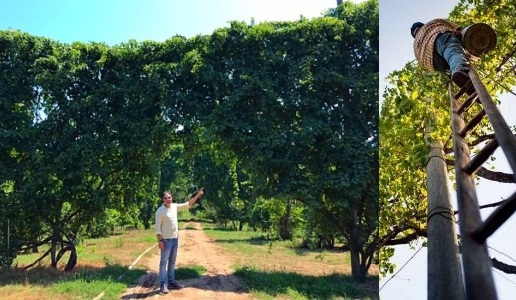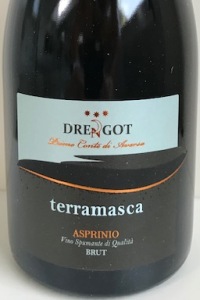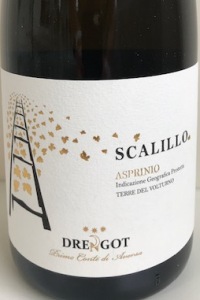Spiderman wine: Asprinio d’Aversa Drengot

Asprinio grapes are cultivated using the traditional alberata system, climbing vertically on leads to as high as 15m. Drengot is one of the few estates that still employ this ancient Aversa method.
Pallagrello wine was to the Bourbon court what Asprinio d’Aversa was to that of Roberto d’Angiò, the wise king of Naples who transformed the city into a capital for the first time and encouraged art and culture. An example is the magnificent Santa Chiara complex that he commissioned and the intellectual climate that surrounded him, with people like Giotto, Petrarch, Boccaccio and Simone Martini attending his court. To his guests he would offer a sparkling wine made from Asprinio grapes, grown in the area around Aversa where the volcanic soil has both grey and tallow tuff stone.
It was Roberto d’Angiò himself who initiated the production of Asprinio by inviting from France Louis Pierrefeu, the cellar master of the king, to identify the best grapes and vineyards to make this wine. The wine made from Asprinio (Asprinio meaning tart, tonic with a high level of malic acid) was similar to refined Champagne and won over the Neapolitan court thanks to that feral note from the grape, the soil and the original method of vine training using trees as guides, a method also called martitate or intertwined, which was centuries old.
The vines grow wrapped around poplar trees that serve as guides and reach as high as 15m or more. The vines are ungrafted and very resistant to diseases like peronospora and powdery mildew. The long Asprinio vines also grow wrapped around zinc-covered steel cables hung between trees creating an impressive green wall.
The beauty of these vines is breathtaking to say the least and the harvesting of the grapes is spectacular and recalls the history of this extraordinary area. The picking the grapes is an ancient art, handed down over the centuries, which involves the “vilignatori” climbing up thin and very high wood ladders, called “scalillo”, which they have made themselves. These pickers were nicknamed “spidermen” for the way they climbed the vines to pick the grapes to then put them in large baskets, which they lower by rope. Aside from the great difficulty in maintaining their balance, the harvesting was made even more complicated by the wind blowing in from the nearby sea. The alberata Aversana method of vine training is incredible and unique and is currently being considered for recognition by UNESCO as a World Heritage Site.
Alberto Verde, who owns the Drengot winery, produces Asprinio using alberata Aversana vines that are over 200 years old, following in the footsteps of his grandfather. He focuses on typicity to preserve tradition, adding value – as other wineries have for some time – to the natural side of winemaking, battling against the high production costs that have eliminated almost all the alberata vineyards, which have plummeted from 16,000 hectares in the 1960s – in 22 towns following regulated growing methods – to only 22 hectares today, of which 2.5 belong to the Drengot winery.
Fortunately, the small village of Cesa has worked to preserve the alberata Aversana tradition by creating an agricultural park of over three square kilometers where this vine training method continues as does the cultivation of the percoca peach, which is also typical to the area. The town also as 99 tuff caves to store Asprinio wine which are underneath the villages old building and are connected to each other by a network tunnels.
The Drengot winery will soon be moving to an 18th century building in Cesa that has caves that are as deep as 20m below ground. They produce two wines made from grapes picked at different heights: Terramasca Asprinio Extra Brut, made using the Charmat method for obtaining effervescence, and Scalillo Asprinio, which is made in stainless steel. Both wines are distinguished by their typical freshness and distinct acidity.
 Terramasca Asprinio Extra Brut 2017
Terramasca Asprinio Extra Brut 2017
89/100 - 40,00
Made from Asprinio grapes cultivated using the alberata Aversana method, with the vines wrapped abound poplar trees, and the Charmat method for the effervescence. The wine has a straw-yellow color with golden reflections and a dense effervescence. The aromas are of limoncella apple, yellow peach, candied citron and fresh almond that usher in a captivating, bracing and flowing mouthfeel.
Bottles produced: 12,000.
 Scalillo Asprinio 2017
Scalillo Asprinio 2017
90/100 - € 30,00
Made in stainless steel from Asprinio grapes cultivated using the alberata Aversana method, with the vines wrapped abound poplar trees. The color is a bright, straw-yellow and the aroma has notes of citron and tangerine peel, white melon and lychees. The mouthfeel is crispy, sharp, taut and brackish with a long iodine finish.
Bottles produced: 6,000.

 Italiano
Italiano











